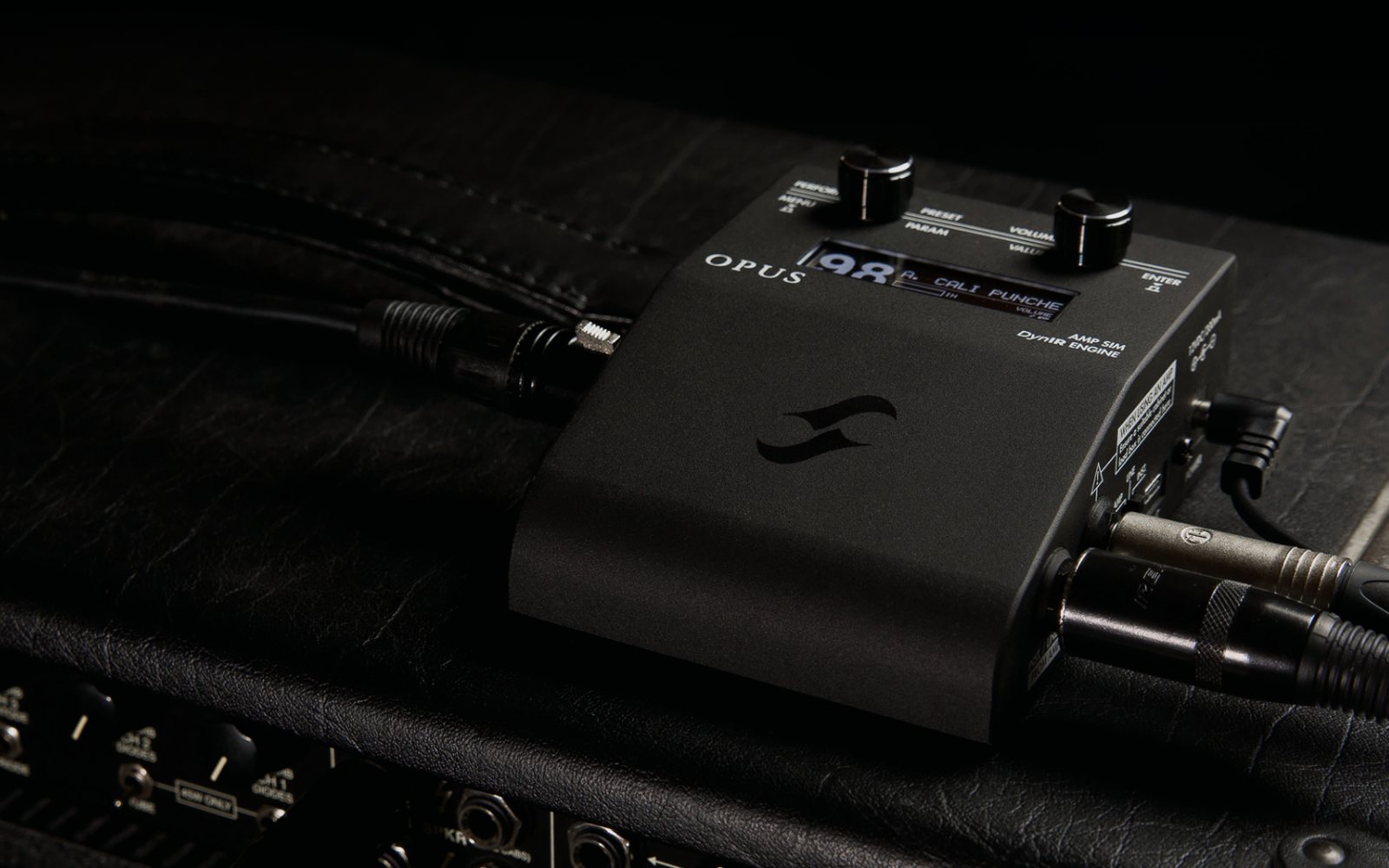I’ve been a big advocate, spokesperson and fan of Two Notes’ products for a while.
I came about my Two Notes Engineering Torpedo Reload when I was starting my recording journey, and haven’t stopped using it. I’ve even blown it up a few times, having plugged speaker cabs into the attenuator input and vice versa, and I’ve paid to have it fixed a few times over because it’s become such an essential part of my recording workflow.
Because of all this, the OPUS really excited me. Having come from a growing range of C.A.B. products, designed to offer total solutions to guitar tone. Two Notes describe the OPUS as “an end-to-end tone shaping Amp Simulator and DynIR Engine”, offering a more comprehensive product from Two Notes overall.
Read more features, columns and interviews here.
DynIR technology
Two Notes’ DynIR technology refer to their dynamic impulse responses, offering authentic and uncompromising access to a growing number of cabinet emulations and more. Trusted by the likes of Pete Thorn, Unearth and Romesh Dodangoda, Two Notes’ DynIR have impulse responses from Mesa, Victory, Fortin and Celestion to name but a few, with a slew of options available with multiple speakers, cabinets layouts and more.
The OPUS serves equally well as a crystal clear pedal platform, allowing you to build gritty tones with additional pedals on top of a crystal clear clean sound, or use the OPUS itself to drive, distort and refine your tone.
Foundationally, the OPUS is an entire signal chain, offering even more than traditional amps. It’s everything from preamp stage to power stage, with varying options and flavours, all the way up to selecting one of eight microphones on your chosen cabinet, and having the option to double mic that cabinet! As if that weren’t enough, Two Notes have updates for the range available to users, available via the USB-C and the periodic firmware updates. If you still need more, the OPUS accepts some third-party impulse responses.
Connecting wirelessly to Torpedo Remote software allows further control over all parameters of the OPUS’ sounds, presets and more. Within the app you can control presets, dial in tone like you would on an amp, as well as toggling your mic selection, and moving the mics closer or further from the amp, as well as on or off axis. Condensers, ribbons and dynamic mics are available depending on your preferences!
EL84, EL34, 6L6 & KT88
Plugging in a guitar sends it straight to the preamp section, allowing you to toggle between traditional British and American sounds from all eras with the Foundry, Peggy, Albion, Foxy & NiftyFifty preamp options. The power amp emulation stage toggles between EL84, EL34, 6L6, KT88 with two circuit types, either Class A (Single Ended) and Class A/B (Push-Pull) and two tube modes: pentode and triode.

As if all that weren’t enough, the OPUS features effects and more to further shape your tone. Switch between guitar and/or bass modes for a more attuned experience, then add Body for mid range, Thickness for low end weight and Brilliance for high frequency sparkle. Toggle between different reverbs like Spring, Plate, Tile, Echo, Studio A, Studio B, Loft, Cathedral, Basement, Hall A, Hall B and Crypt, and put together previously unheard of reverb combinations, expanding so much further than the original amps could. Beyond this there’s multiple EQ controls, a noise gate and a tuner.
Let’s get down to brass tacks though, software is important, but how do you connect the OPUS? The OPUS has an Instrument/Line In/From Amp, situated on the right side of the pedal to match other pedals you may have before it. If connecting from your amp, i.e. to harness just the cabinet part of the signal chain, ensure to use a loadbox to prevent sending an amplified load into the OPUS and off to the repair shop with my Torpedo Reload! Using the OPUS this way allows you to use your amplifier head as you usually would, but splitting the signal off to emulated cabinets for silent playing, recording and practice.
View this post on Instagram
There’s also a ‘To Speaker’ connection, allowing the OPUS to be connected from here to a power amp and cabinet, using the OPUS as a replacement for a typical amplifier head. This side of the pedal also includes a toggle to adjust input from Amplifier to Line to Instrument, as well as a USB-C port and the 12VDC power socket.
The other side of the unit features an XLR DI out, with a ground lift, and a ¼” Line Out. You’ve also got ⅛” headphones, MIDI In and an Aux In for practice or otherwise!
All in all the OPUS is as complete a solution as you could expect from a product like this. All encompassing products aren’t for everyone, and instead Two Notes produce solutions to nestle into your existing gear, offering additional routing, refinement and overall great sound. The OPUS can be as involved in your final sound as you like, offering amplifier models, cabinet models and microphones as well, enabling players to really refine their tone or just use one stage of the signal chain; be it just the preamp section to be amplified into a real cabinet or vice versa: just the cab.
With routing options to send and receive sound, split signal and monitor it back, the OPUS is currently leading the way for Two Notes’ range of smaller-format, pedal style products in Two Notes’ ecosystem.
For local enquiries, visit Australis Music.

